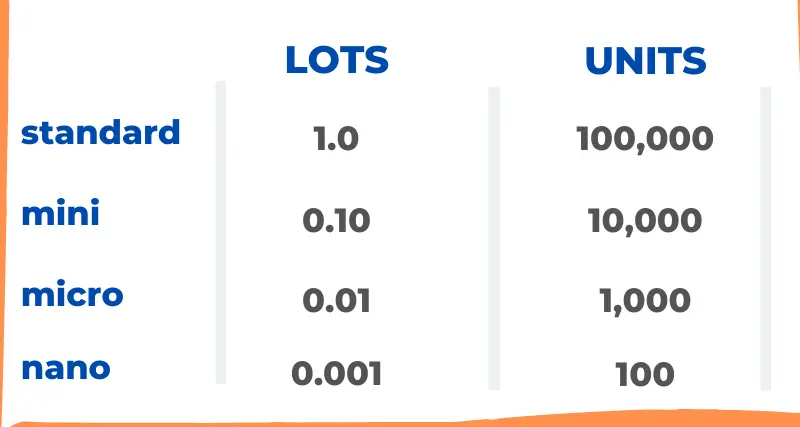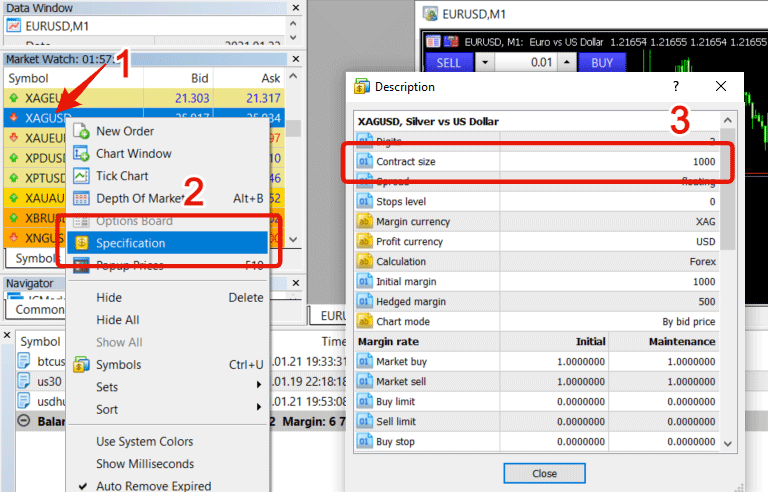Discover our Forex Lot Size Calculator - Instantly calculate the ideal lot size for your trades, ensuring precise risk management in the foreign exchange market.
What are Lots in forex?

In forex trading, a lot refers to a standardized trading size used for measuring the volume of a trade. It represents the number of currency units bought or sold in a single transaction. The size of a lot can vary depending on the type of account you have and the broker you are trading with.
There are three main types of lots in forex trading:
- Standard Lot: The largest lot size, consisting of 100,000 units of the base currency.
- Mini Lot: One-tenth the size of a standard lot, containing 10,000 units of the base currency.
- Micro Lot: One-tenth the size of a mini lot, containing 1,000 units of the base currency.
Let's illustrate this with an example:
Suppose you have a trading account denominated in US dollars (USD), and you want to trade the GBP/USD currency pair. The current exchange rate is 1 GBP = 1.4000 USD.
If you decide to buy one standard lot of GBP/USD, you are effectively buying 100,000 British pounds. Since the exchange rate is 1 GBP = 1.4000 USD, you would need 140,000 USD to execute this trade (100,000 GBP x 1.4000 USD/GBP).
If you choose to buy one mini lot of GBP/USD, you are buying 10,000 British pounds. With the same exchange rate, you would need 14,000 USD to open this position (10,000 GBP x 1.4000 USD/GBP).
And finally, if you opt for one micro lot of GBP/USD, you are buying 1,000 British pounds, which would require 1,400 USD to execute this trade (1,000 GBP x 1.4000 USD/GBP).
The lot size you choose affects the value of each pip in your trade, which in turn impacts your potential profit or loss. Understanding lot sizes is crucial for effective risk management and position sizing in forex trading.
How to use position size calculator (Lot size calculator)?
Currency Pair: Traders have a diverse selection of options, including major forex pairs, minors, exotics, cryptocurrencies (e.g., BTC/USD, ETH/USD, LTCUSD, XLM/USD, XRP/USD), and commodities like Gold, Silver, and Oil. For our example, let's consider the USD/CAD pair.
Stop-Loss (Pips): Traders specify the maximum pips they are willing to risk in a trade. For our example, we'll set the stop-loss at 100 pips.
Account Balance: Simply input the account equity. In our case, the account balance is $2000.
Risk: This is a vital field in the Position Size and Risk Calculator. Traders can express the risk as a percentage or a specific value in the account's base currency (e.g., $2, $20, $40, etc.). A recommended guideline is not to risk more than 2% of the account equity per trade for longevity in trading careers and recovery from losses. In our example, we will select 2% as the risk.
Account Currency: To determine the ideal lot size, the account base currency is crucial, as it considers the pip value and market rate of the selected cross. In our case, we'll use USD as the deposit currency.
Once we click the "Calculate" button:
The Results: The Position Size and Risk Calculator uses live market data with the current interbank rate (presented in a 5-digit format) and displays the price of the selected currency pair (USD/CAD in our example).
With a stop-loss of 100 pips and a risk of 2% of the account equity, the recommended lot size is 0.05 lot.
Furthermore, the calculator shows that 0.05 lot represents 5,000 units, and the portion of the account equity at risk, or the value of the position, is $40 USD in our case.



